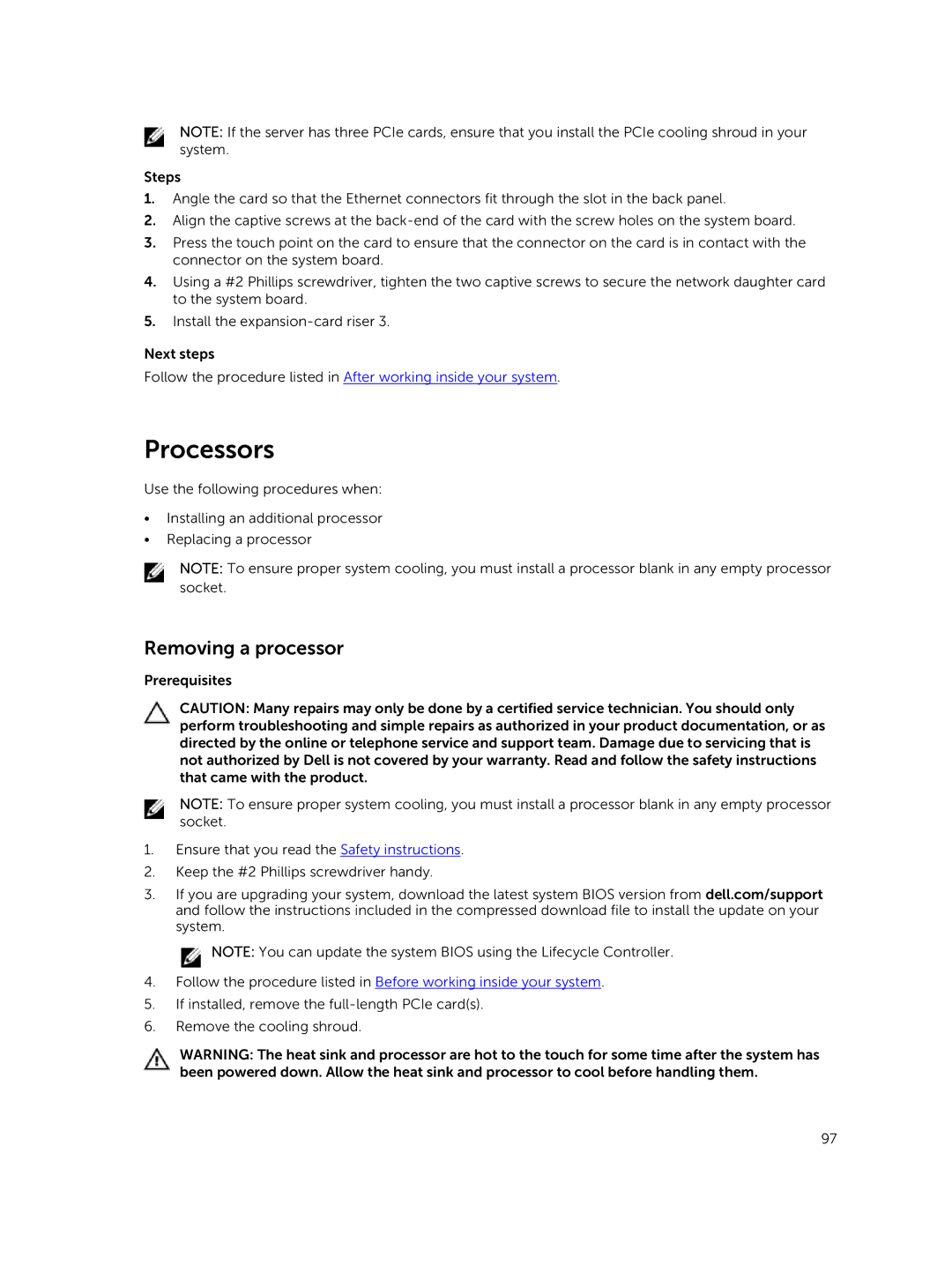NOTE: If the server has three PCIe cards, ensure that you install the PCIe cooling shroud in your system.
Steps
1.Angle the card so that the Ethernet connectors fit through the slot in the back panel.
2.Align the captive screws at the
3.Press the touch point on the card to ensure that the connector on the card is in contact with the connector on the system board.
4.Using a #2 Phillips screwdriver, tighten the two captive screws to secure the network daughter card to the system board.
5.Install the
Next steps
Follow the procedure listed in After working inside your system.
Processors
Use the following procedures when:
•Installing an additional processor
•Replacing a processor
NOTE: To ensure proper system cooling, you must install a processor blank in any empty processor socket.
Removing a processor
Prerequisites
CAUTION: Many repairs may only be done by a certified service technician. You should only perform troubleshooting and simple repairs as authorized in your product documentation, or as directed by the online or telephone service and support team. Damage due to servicing that is not authorized by Dell is not covered by your warranty. Read and follow the safety instructions that came with the product.
NOTE: To ensure proper system cooling, you must install a processor blank in any empty processor socket.
1.Ensure that you read the Safety instructions.
2.Keep the #2 Phillips screwdriver handy.
3.If you are upgrading your system, download the latest system BIOS version from dell.com/support and follow the instructions included in the compressed download file to install the update on your system.
![]() NOTE: You can update the system BIOS using the Lifecycle Controller.
NOTE: You can update the system BIOS using the Lifecycle Controller.
4.Follow the procedure listed in Before working inside your system.
5.If installed, remove the
6.Remove the cooling shroud.
WARNING: The heat sink and processor are hot to the touch for some time after the system has been powered down. Allow the heat sink and processor to cool before handling them.
97
